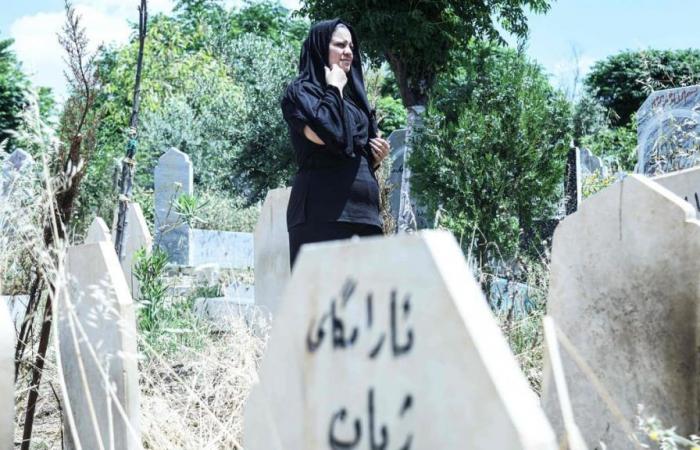In Iraqi Kurdistan, the tradition is for families to meet on Fridays to pay their respects at the grave of a deceased loved one. But at the Siwan cemetery, a square containing the victims of femicide remains most often deserted.
Here lie dozens of victims of domestic violence, under tombstones that for the most part do not even display a name, sometimes just a number, attached to the lists of the forensic department. Lives forever forgotten, of wives killed by a violent husband, of daughters and sisters murdered by a father or brother who felt they had to defend the family “honor.”
“The gravedigger buries them at night, so that their relatives don’t know where the grave is and come to demolish it,” feminist lawyer Rozkar Ibrahim told AFP at the Siwan cemetery.
She could recount tragedies for hours: like that of a woman who fell in love, then became pregnant, who tried to flee the country with her lover and their child. Their relatives find them and kill them, along with the baby.
“They are buried here,” confides Ms. Ibrahim, a thirty-year-old dressed all in black, visiting the cemetery near Souleimaniyah, the second city of Kurdistan, in northern Iraq.
Photo Shwan MOHAMMED / AFP
An aerial view of the portion of the cemetery in question.
“This cemetery should not even exist,” adds the activist, fighting for years to identify anonymous steles.
The exact number of victims buried remains unclear. But a gravedigger for 15 years, Othman Saleh claims to have buried some 200 women and teenage girls, some as young as 13, on his own.
“They were killed, immolated (by fire) or strangled,” said the 55-year-old man.
“Femicides and mutilations”
In a largely tribal and conservative Iraq, violence against women abounds. Of the 43 million inhabitants, more than a million women and girls are threatened by gender-based violence, according to the UN.
In autonomous Kurdistan, which aims to be an oasis of stability and modernity in a country torn apart by decades of conflict, dozens of feminicides are reported every year. Even though local authorities adopted a law in 2011 criminalizing domestic violence.
Noting “significant progress” on the legislative level, Razaw Salihy, researcher at Amnesty International, confirms the “alarming rate” at which “feminicides and mutilations perpetrated on women and girls are occurring in Kurdistan, most often at the hands of relatives of male sex”.
Photo Shwan MOHAMMED / AFP
The “culture of impunity” is maintained by an “extremely low rate” of convictions, she adds.
At the Siwan cemetery, the feminicide square welcomes unidentified women from all over Kurdistan, assures Ms. Ibrahim.
With the wear and tear of time and rain, the numbers on most of the steles fade, says the lawyer. “You have to turn to the forensic department to obtain information” from the victims.
In 2020, Qubad Talabani, deputy prime minister of the autonomous region, prohibited the burial of any victim without identification. As for the others already buried, their tombstone had to have a symbolic inscription: “life”.
In the meantime, the dramas continue. In June, a man set his 17-year-old pregnant wife on fire, the teenager’s father, Jiza Jawhar, told AFP.
The mother and child died. The husband was arrested by the security forces, but his family denies the accusations, ensuring that the young girl committed suicide.
“Haunted by fear”
In 2021, Kurdistan recorded 45 femicides compared to 25 the previous year, according to the latest official statistics obtained by AFP.
But “honor killings” have “decreased considerably” in 2024, assures Serkut Omar, of the Department for Combating Violence Against Women, without providing figures.
Director of the Suleimaniyah forensic department, Barzan Mohamed has seen the worst in his 21-year career.
Concerning the cases of femicide that he has treated, most of the victims were killed “by gunshot”, “sometimes a single shot, other times up to ten impacts”, he explains.
“We have also seen cases of strangulation, with bare hands or with a rope,” he said, also referring to a body burned to the point of being “unrecognizable”.
Beaten by a husband who threatened to kill her, Banaz fled to find refuge with her father. Her brother then broke her nose, ordering her to obey her husband.
“Twice he put a gun to my head in front of my children,” confides the 43-year-old woman.
Fearing that she would one day find herself in the Siwan cemetery, she ended up leaving Iraq. “I have always been haunted by the fear of ending up like those buried there.”






